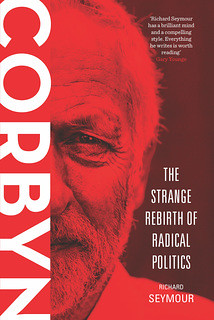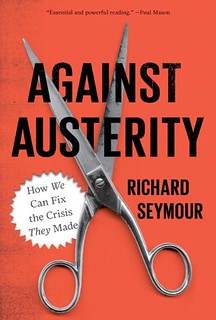Sunday, July 27, 2008
Back to Trnopolje posted by Richard Seymour

Ed Vulliamy is not going to tell you anything different. Of course it was a "concentration camp", only slightly less "satanic" than Omarska and other such institutions. Of course the emaciated Fikret Alic, "behind the barbed wire", "embodied the violence unleashed on Bosnia's Muslim civilians at the orders of Radovan Karadzic". And, as we recall, it was necessary to establish the facts of the matter, and what one might say about them, by prosecuting a tiny sectarian publication and driving it out of business. (Never mind what became of said sectarians - the principle established is that it was proper for the state to determine what amounts to truth in the public domain, and what may be censured.) The trouble is that, as Phillip Knightley wrote at the time, the imagery that Ed Vulliamy is citing as evidence in itself for what the newspapers dubbed "Belsen 92", is a deception. Knightley pointed out to The Guardian in 1997 that the key symbols in the image, the ones that Vulliamy evokes here - the barbed wire and the emaciated condition - were inaccurate because a) the other prisoners were clearly not starved, and food could be brought to the prisoners by villagers (Alic's own account of his condition appears to be that he was both poorly nourished and suffering from an untreated illness), and b) while Alic and others clearly were in fact imprisoned (others were not), what was imprisoning Alic was not barbed wire but armed guards. It was, in short, an image settled on to convey what could not be said openly - that these were Nazi-style concentration camps. Former ITN producer Bruce Whitehead wrote, in a trenchant review of ITN's conduct, that "the report that aired gave the clear impression that these men were being forcibly starved behind barbed wire". This was part of a context in which Roy Gutman won a Pulitzer Prize for reporting on Serbian "death camps" with metal cages in which thousands of prisoners were being killed and their bodies cremated for animal feed (evidence for which is scarce). The French organisation Medicins Du Monde, set up by Bernard Kouchner as a split from Medicins Sans Frontieres in 1980, launched a mass campaign advertising death camps, comparing Milosevic with Hitler, inviting audiences to believe that the Nazi holocaust was taking place all over again.
To linger with the obvious for a moment, there was in fact a system of camps intended as prisons for those deemed suspect by forces deputised by the Republika Srpska. They also functioned as deportation camps for those being driven out by those forces, as places where Bosnian men could be drafted to fight on the side of Republika Srpska, and as the basis for 'prisoner transfers' between the hostile forces. Many were closed down in 1992, with thousands of prisoners transferred to UN control. Trnopolje was a transit camp for detainees, although as Phillip Knightley elsewhere wrote (see below), it was also a place where refugees could go. These camps were promulgated in the context of a brutal, ethnicised civil war, which included the deliberate terrorising of civilian victims, and indiscriminate murders by all sides in the conflict. In those camps, murders, beatings and gang rapes took place. It is worth noting that, as Vulliamy points out, he and his journalistic confederates were able to report about these camps because Karadzic had enough bravado to challenge them to find atrocities during a bus-tour of the camps arranged by himself. Bosnian and Croatian forces were not so stupid as to invite journalists to inspect their detention camps, and I bet that most readers couldn't even name one. You know of Omarska, Trnopolje and at a stretch Manjača. The camp at Bugojno run by the Bosnian army is hard to find details about, and while there are extensive wikipedia articles and press discussions of those run by the Republika Srpska, there is nothing on wikipedia about this camp. Try finding out about the Orašac Camp, also run by the Bosnian army. One or two individuals have been brought before the ICTY in connection with acts committed in those camps, but I don't think a single journalist ever thought to try to visit them, much less tell the world that they were death camps. A Lexis Nexis search discloses less than a dozen news stories specifically about the Orašac Camp, all from Croatian news sources. These pertain to investigations into the ritual beheadings, beatings and torture of Serb and Croatian detainees, among other things. Only a few sources outside Croatia can be found mentioning the Bugojno camp, belatedly, even though the area in which the detention camp was sited was frequently reported on during and after hostilities. No one cared, it seems. Journalists had effectively become co-belligerents with the Bosnian army and the their mujahideen auxiliaries, and anything that didn't fit the script contrived by PR companies such as Ruder Finn, which was employed by both Croatian and Bosnian governments, or that of Washington and its allies, was out of the picture.
At any rate, here is a passage from Knightley's evidence intended for the ITN/LM trial:
The most likely explanation is that Trnopolje was both a refugee camp and a detention camp--there were at least two different groups of people there--and that this is what has confused the issue. Refugees had come there of their own free will and could leave at any time. But there were also Bosnian Muslims like Fikret Alic who had been transferred there from other camps, who were awaiting identification and processing, and who were not free to leave.
But even this group was not confined by barbed wire. The out-takes show them in the main camp, outside the agricultural compound, and the main camp was not surrounded with barbed wire, as the War Crimes Tribunal agrees, but by a low chain-mail fence to keep schoolchildren off the road. As well, the barbed wire fence was no deterrent to anyone determined to escape because it was poorly constructed with wide gaps. What confined the Bosnians at Trnopolje, the War Crimes Tribunal says, was the presence of armed Serbian guards. So ITN was right in that the men in the film were detained in Trnopolje, but the image used to illustrate that was misleading because it implied that they were detained by the barbed wire. The barbed wire turns out to be only symbolic.
Were all the inmates starving? No. Fikret Alic was an exception. Even in Marshall's report other men, apparently well-fed, can be seen, and the out-takes reveal at least one man with a paunch hanging over his belt. Phil Davison, a highly-respected correspondent who covered the war from both sides for The Independent says, "Things had gone slightly quiet. Suddenly there were these death camps/concentration camps stories. They were an exaggeration. I'm not excusing the Serbs but don't forget that there was a blockade on Serbia at the time and there not a lot of food around for anyone, Serbs included."
It is a peculiar irony that just when reporters are most integrated into state propaganda (which is usually the case during a war), that is when they become the most arrogantly assured of their absolute, uncompromising integrity and intrepidity. The very fact of their presence at the scene of the crime, their ability to bear witness, even where their attention has been very carefully directed and framed in advance by assumptions elaborated by intelligence and PR agencies, is enough to make them think they are changing the course of history, humanitarian agents enacting la justice de Dieu. (Sometimes the reputation might be warranted. Apparently, the photographer and reporter Janet Schneider, who liked to stare down the "corridor of death" and coolly stated that she had endured rape "more than once" in the course of securing a story, was directly involved in assisting Fikret Alic after his escape from Trnopolje). The sheer irrational fury unleashed when their role is challenged is indicative of the intense narcissism that has been channelled into the enterprise. So, here we are, back to Trnopolje, the barbed wire, the body eaten by hunger and disease, and the spectre of Belsen. And though the montage is a crude specimen of revisionism in itself, it is of course those who do not assent to such vulgar redactions that are labelled revisionists.
Labels: 'death camps', bosnia, itn, lm, serbia, trnopolje, US imperialism, yugoslavia










